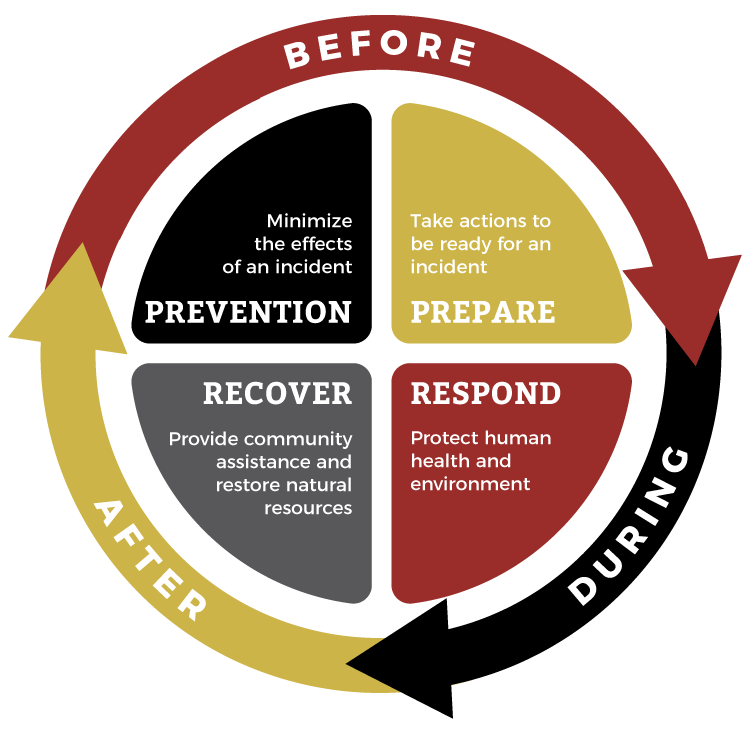
Human Safety is the Primary Consideration During Spill Response
Oil spills and hazardous chemical releases on land and water and to the air can happen at any time of the day and in any weather condition. When oil or hazardous chemicals are spilled/released in the environment it can endanger public health, imperil drinking water, devastate natural resources, and disrupt the economy.
Containment and cleanup are your goal in a spill, however, the primary consideration is human safety. Emergency responders must have proper training and know their limitations.
In the Event of an Oil or Hazardous Chemical Spill/Release:
The National Response Center is the national point of contact for reporting Oil, Chemical, Radiological and Biological discharges.
Report Spills to the NRC at 1-800-424-8802
Notify primary response agencies (your response partners) and federal natural resources trustees. See Regional Response Teams (RRTs) in your region.
Resist rushing in and identify and understand the hazards before attempting to help others.
Position yourself upwind, uphill, or upstream from the hazard.
Stay clear of all vapors, fumes, smoke, and spills even if no hazardous materials are known to be involved. Do not assume spilled materials and their by-products are harmless. Many extremely toxic gases and vapors are colorless, odorless, tasteless, and invisible.
Isolate and secure the scene without entering the immediate hazard area. Assess the situation and attempt to determine, from a safe distance, upwind, uphill, upstream, using binoculars if possible.
Protect yourself and the public. Prevent the public from entering the spill site or its perimeter or coming into contact with spilled material. Everyone who is not adequately trained and protected should stay upwind an out of low areas.
Do not walk into or touch spilled material and avoid inhalation.
Call for the assistance of trained personnel as soon as conditions permit. Keep the spill site secure and wait for properly trained officials.
Evacuations in response to releases of oil or hazardous materials shall be conducted in accordance with Tribal Emergency Response Plans (TERP). The TERP identifies under what circumstances evacuation is appropriate and necessary.
See ITEP’s Hazardous Waste and Emergency Response Training Requirements webpage.
The text above have been provided as a starting point for the development of this webpage. Please consider submitting additional information, examples, and Tribal case studies to TLAC@nau.edu or use the TLAC Contact Form to share here.
Related TLAC Webpages
Additional Websites of Interest
United States Coast Guard National Response Center
EPA’s Emergency Response Webpage
EPA’s Responding to an Incident – First Line of Defense Webpage
EPA’s Investigating Emergency Response Sites Webpage
NRC Application to Receive Spill Notification Reports
Regional Response Team 10 – Oil Spill Response Quick Reference Guide for Tribal Leadership
DOI’s Emergency Response to Oil Spills and Hazardous Material Release Webpage

